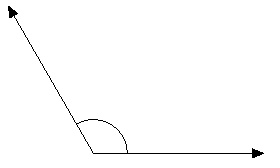

Slide 13 Practice Time Slide 14 Directions: Identify each pair of angles as vertical, supplementary, complementary, or none of the above. Angle B and angle C are also alternate exterior angles. In the figure given below, \(60° + 30° = 90°\). Alternate exterior angles have the same degree measurement. This means that the angles are supplementary and have a sum of (180circ).

Solution: Notice that two angles form a straight angle when together. In other words, when the complementary angles are placed together, they form a right angle (\(90\) degrees). Q and S are supplementary (Q+S180Q+35180 Q 180-35145) Complementary and supplementary angles Example 3: Find the missing angle. If the sum of the two angles reaches \(90\) degrees, they are called complementary angles. When two angles are paired, then there exist different angles such as: 1. Step by step guide to finding complementary, supplementary, vertical, adjacent, and congruent angles
DEFINE SUPPLEMENTARY ANGLE 0 HOW TO


 0 kommentar(er)
0 kommentar(er)
